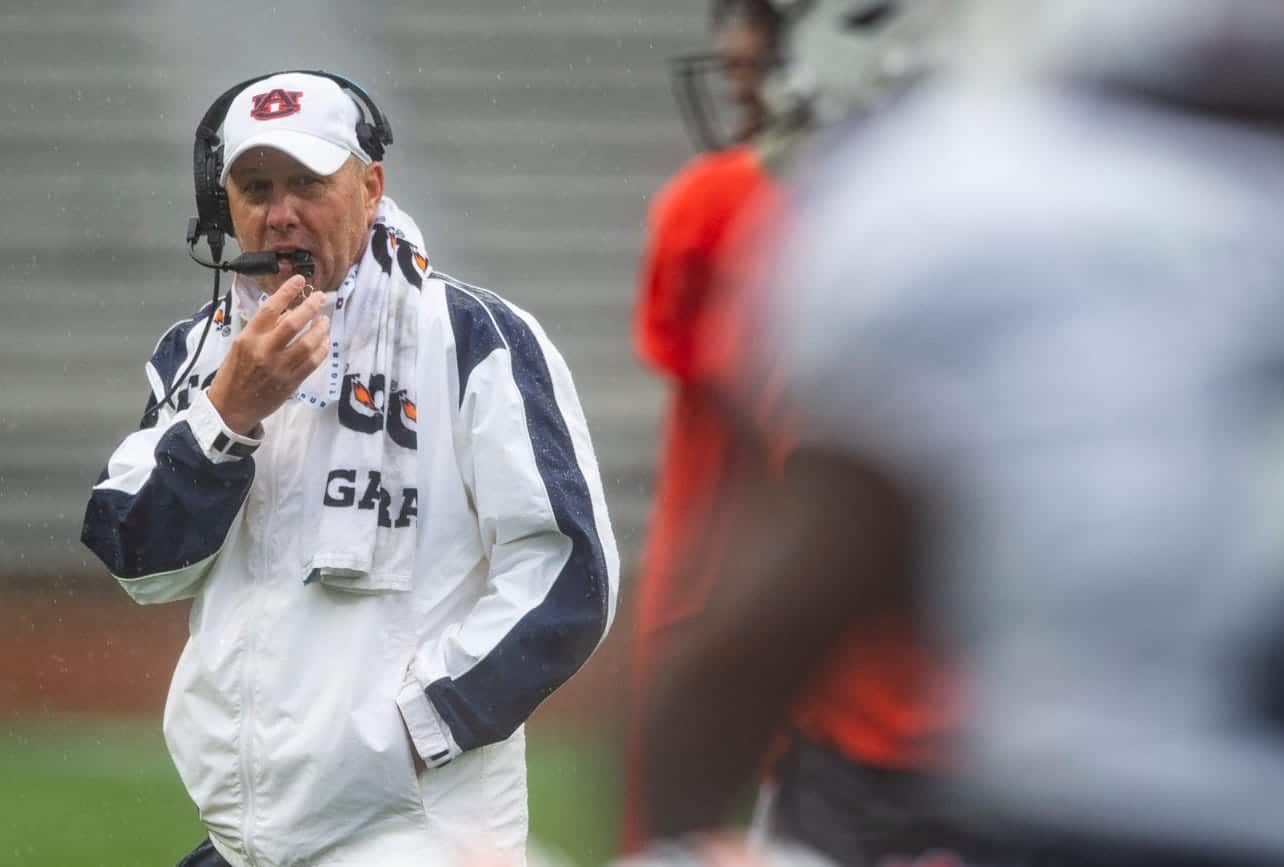
If you’re a fan of a team with a spring vibe of “our starting QB isn’t even on our roster yet,” my thoughts are with during in this difficult time.
That sounds harsh, but reality is that expecting a post-spring quarterback addition to become a star is a step beyond ambitious.
“But what about Joe Burrow?”
Ah, yes. Let’s talk about the guy responsible for arguably the greatest individual season ever.
(Chill, Auburn fans. I said “arguably.”)
Burrow was indeed a post-spring transfer. He decided he wasn’t going to beat out the late Dwayne Haskins for the Ohio State starting job, and he ended up transferring to LSU. Burrow ended up being exactly what the Tigers needed in 2018. He didn’t turn the ball over, he was extremely durable beyond a makeshift offensive line and he had the swagger needed to not only win over the locker room, but also to fend off the doubt about Ed Orgeron’s future.
He also ran an extremely limited version of the offensive playbook, the offense ranked No. 67 in passing and No. 88 in touchdown passes. Burrow became an icon because of what he did in 2019, AKA the year after he was a post-spring enrollee.
Even that, I’d argue, makes Burrow the exception and not the rule. The rule is that non-quarterbacks can become great success stories as post-spring transfers, and quarterbacks, well, that’s a much more challenging path. It makes sense if you think about it. Missing out on spring ball — as opposed to being there throughout the spring semester like Caleb Williams was at USC last year — puts a quarterback at a disadvantage. Learning new terminology in a new offense with a new set of receivers with a new locker room to win over is, by any stretch, extremely difficult to do as a post-spring enrollee.
Another notable quarterback who was a post-spring enrollee was Will Levis. But Levis, if you recall, announced his Kentucky commitment in January 2021. That’s significant because while he missed valuable reps that spring because he was getting his undergraduate degree at Penn State, he at least still got to work with new offensive coordinator Liam Coen and he could learn the offense. And Levis, like Burrow, was by no means a finished product during the first half of his first season as a new starter.
That’s worth mentioning because if your team is set to start a post-spring enrollee at quarterback, you should be patient. The pre-spring market is entirely different than the post-spring market. It’d be stunning to see players as accomplished as Sam Hartman and Devin Leary hit the post-spring portal.
You might argue that Jayden Daniels had a lot of success even though he wasn’t necessarily on campus throughout all of LSU’s spring camp. He did, however, hit the portal in February, make a decision in the first week of March and report to camp in the middle of spring ball in late-March.
(His LSU bio actually says that he enrolled in January, which was before he even entered the portal. I guess in today’s world of online classes, we shouldn’t assume that being on campus and enrolling are synonymous.)
Daniels had that sense of urgency because those reps are valuable, especially in a quarterback battle. Chances are, nobody is dipping into the post-spring portal market and finding an unquestioned QB1. Go back and look at last year’s group of post-spring QB additions. Exclude a case like Levis, where he announced his transfer school pre-spring but couldn’t enroll until summer.
Is the best guy from that group … Emory Jones? Yeesh. And remember, Jones announced his portal intentions in mid-March. It’s different now with the portal window, which opens this weekend (April 15) and runs through the next 2 weeks (April 30). (The dates were May 1-15, but the NCAA recently moved them up 2 weeks.)
That’s why I think all of this is worth discussing. There’s going to be a sense of urgency from quarterback-needy programs like Auburn and maybe Mizzou. But the market might not spit out someone like a Brock Vandagriff, who is currently locked in a battle with Carson Beck for QB1 status at Georgia. Burrow’s self-awareness led to him essentially admitting defeat. For a quarterback, I believe that’s a more difficult post-spring reality to accept than we realize, especially when the job isn’t going to an incumbent starter.
Now there’s a chance that the portal adds an NIL-motivated quarterback who is set to return as a starter. Lane Kiffin made waves last year for saying he thought Bryce Young should enter the portal and get his maximum value on the open market even if there was a 0.0% chance of him leaving Alabama. Kiffin isn’t wrong, but for quarterbacks and not an All-American receiver like Jordan Addison, I don’t know that’s a path they even want to consider. Going somewhere else and having to learn a new system with a new play-caller and new receivers is all well and good in January, but it’s a bit different this deep into the offseason.
More likely is that the quarterback market will be dominated by guys who had a roadblock to getting major reps. There could still be significant signal-callers added. We should still remember that Burrow, AKA one of the best quarterbacks we’ve ever seen at the college level, had his share of ups and downs making that post-spring transition. It’s unrealistic to think anyone is about to step in and become an all-conference quarterback.
It’s not the end of the world to rely on a post-spring quarterback addition. Several teams will do that.
That path just shouldn’t come with earth-shattering expectations.
Connor O'Gara is the senior national columnist for Saturday Down South. He's a member of the Football Writers Association of America. After spending his entire life living in B1G country, he moved to the South in 2015.







